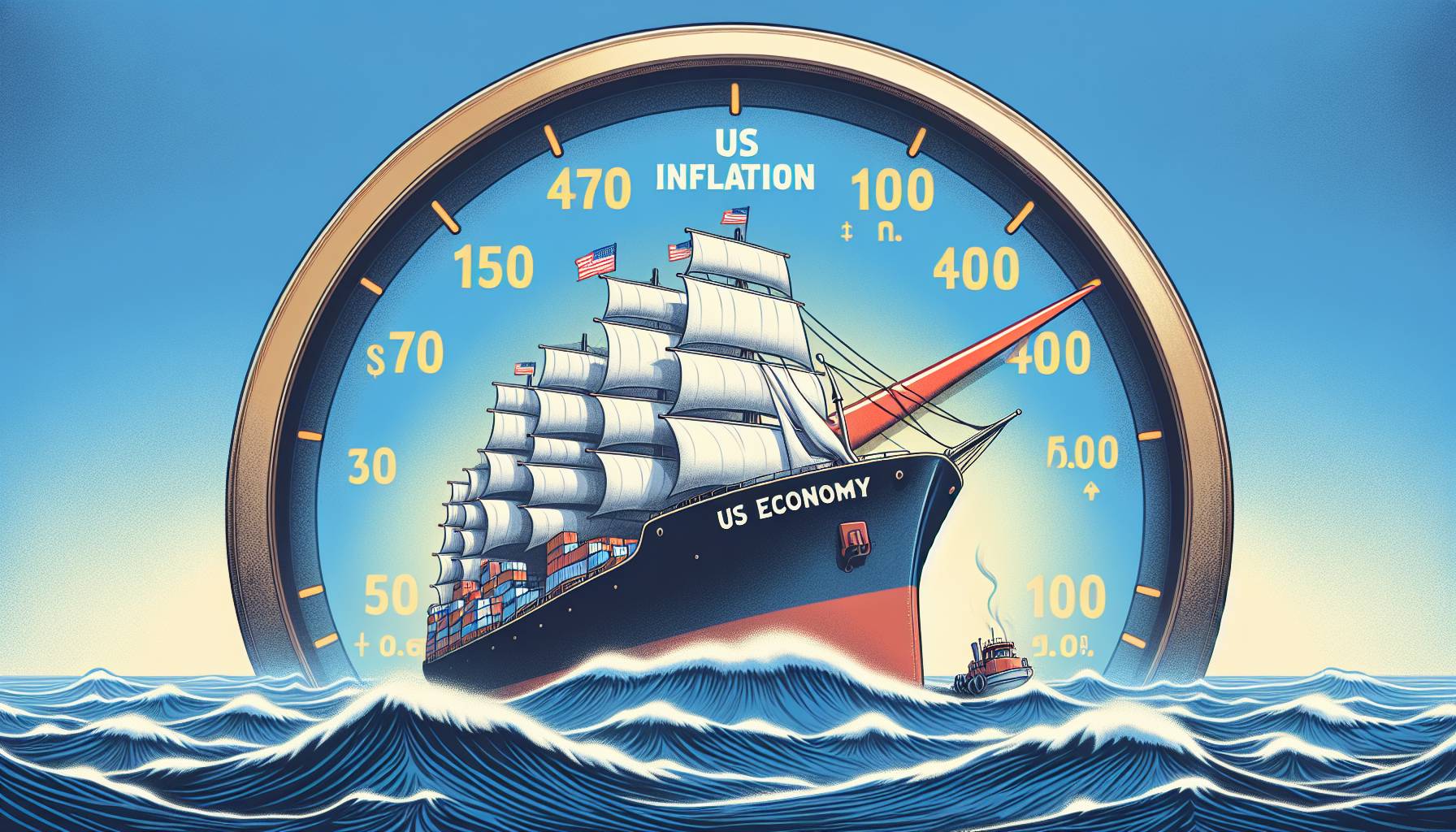Understanding currency pair dynamics
Historically, significant fluctuations in US dollar pairs often correlate with key economic indicators and geopolitical events. However, it’s the response to such events that reveals much about market sentiment and the potential for similar reactions in the future. By examining these patterns, traders can better gauge the potential impact of upcoming data releases, such as the Consumer Price Index (CPI).
One strategy involves positioning ahead of the CPI release, where traders adjust their portfolios based on expected outcomes. For instance, if market consensus predicts a higher-than-expected CPI figure, traders might increase their exposure to the US dollar in anticipation of its appreciation. Conversely, if the consensus leans towards a lower inflation reading, reducing dollar holdings or shifting focus to other currencies could be advantageous.
Examining historical market reactions provides valuable insights into how currency pairs, especially those involving the US dollar, respond to significant economic announcements. By analyzing past events, traders can identify patterns and potential outcomes that may inform future trading decisions.
The release of the Consumer Price Index (CPI) data is one of the most anticipated events in the Forex market, given its profound impact on currency movements. As a key indicator of inflation, CPI data can significantly influence the strength of the US dollar and, by extension, its pairs. Traders and analysts often brace for heightened volatility and swift price action in the hours following a CPI announcement.
The value of these pairs can be influenced by a multitude of factors, including geopolitical events, economic indicators, and market sentiment. Among these, economic indicators like the Consumer Price Index (CPI) have a significant impact due to their influence on inflation expectations and monetary policy decisions. Traders closely monitor these indicators to anticipate potential fluctuations in currency values.
Analyzing historical market reactions
By building a comprehensive understanding of these volatility patterns, traders can improve their decision-making processes and potentially increase their profitability in the Forex market.
For Australian traders, understanding these historical reactions is particularly important when dealing with the AUD/USD pair. The interplay between domestic and US economic data can create significant opportunities, but also risks. By studying past market behaviors, Australian traders can better anticipate potential movements and adjust their strategies accordingly, ensuring they are prepared for the impacts of upcoming CPI data releases.
Ultimately, the key to successful trading in light of CPI data lies in a balanced approach that combines historical analysis, risk management, and strategic foresight. By preparing for a range of scenarios, traders can navigate the uncertainties of the forex market with greater confidence and agility.
For Australian traders, understanding these dynamics is essential, especially when considering the AUD/USD pair. Influences from both the domestic economy and the US economy can create opportunities and risks. Monitoring these dynamics allows traders to make informed decisions and manage their exposure to market volatility effectively.
Historically, the release of CPI inflation data has been a catalyst for volatility in currency markets. For instance, if CPI figures exceed expectations, it often leads to a swift appreciation of the US dollar. This is because higher inflation can prompt the Federal Reserve to consider tightening monetary policy, such as raising interest rates, to curb inflationary pressures. This expectation of higher rates tends to attract foreign investment, increasing demand for the US dollar and consequently impacting its value against other currencies.
Implications for future trading strategies
Understanding the dynamics of currency pairs is crucial for traders and economists alike. At its core, a currency pair reflects the relative value of one currency against another. In the case of the US dollar, it often serves as the base or quote currency in many major pairs, such as EUR/USD or USD/JPY. Each pair expresses how much of the quote currency is needed to purchase one unit of the base currency.
One notable observation is how certain currency pairs, such as the EUR/USD and USD/JPY, have exhibited distinct volatility patterns during periods of economic uncertainty. These pairs often experience heightened volatility, offering traders both challenges and opportunities to enhance their strategies.
Moreover, the influence of CPI data extends beyond immediate price fluctuations. Long-term trends can also be affected, as consistent CPI data pointing towards inflationary or deflationary trends can shape future monetary policy and economic outlook. Therefore, keeping an eye on CPI trends over time is crucial for traders looking to understand the broader economic landscape and its impact on currency markets.
The magnitude of these market reactions can vary depending on several factors, including the existing economic context, geopolitical climate, and market sentiment at the time of the release. Historical analysis reveals that during periods of heightened economic uncertainty or geopolitical tensions, the reactions to CPI data can be even more pronounced, as investors seek safe-haven currencies like the US dollar.
Risk management is another crucial aspect of trading strategies in this context. Given the volatility surrounding CPI releases, traders should employ prudent risk management techniques, such as setting stop-loss orders and diversifying currency exposure. This helps mitigate potential losses in the event of unexpected market movements.
Historically, a higher-than-expected CPI can lead to a stronger US dollar as it might signal rising inflationary pressures, prompting the Federal Reserve to consider interest rate hikes. This expectation of monetary policy tightening often results in increased demand for the US dollar, causing pairs like EUR/USD and GBP/USD to decline. Conversely, a lower-than-expected CPI can weaken the US dollar as it might delay interest rate increases, providing a boost to other major currencies.
Analyzing past volatility patterns
In analyzing past volatility patterns of US dollar pairs, we delve into historical data to understand how these pairs have reacted to sudden hourly fluctuations. This deep dive into the past provides valuable insights for traders looking to capitalize on future market movements. Understanding these patterns is crucial for identifying potential opportunities and risks in the Forex market.
Volatility in currency pairs often increases ahead of major economic announcements, including those related to inflation data. This is because traders attempt to position themselves advantageously based on their expectations of the outcome. Such movements can be exacerbated by high-frequency trading and algorithmic models that react to news in milliseconds.
Given the significant impact of CPI data, traders need to prepare by considering potential scenarios and setting strategic entry and exit points. It is also essential to monitor market sentiment and positioning in the lead-up to the release. By doing so, traders can better anticipate market reactions and adjust their strategies accordingly, ensuring they can capitalize on the opportunities presented by this critical economic indicator.
In contrast, when CPI data falls short of expectations, it can lead to a depreciation of the US dollar. This scenario might suggest that the Federal Reserve will maintain or even loosen monetary policy to support economic growth, leading to a reduction in demand for the dollar. Markets tend to react quickly to such data, with traders adjusting their positions in anticipation of these shifts in policy and investor sentiment.
- Identifying recurring patterns in hourly price movements.
- Analyzing the impact of past economic announcements on volatility.
- Evaluating the consistency of these reactions across different timeframes.
Moreover, adopting a long-term perspective can be beneficial. While short-term volatility is unavoidable, understanding the broader economic trends and policy directions can help traders maintain a balanced approach. This might involve incorporating macroeconomic factors and geopolitical developments into their analysis to better anticipate currency movements over an extended period.
Impact of CPI data on currency movements
For Australian traders dealing with the AUD/USD pair, the implications of US CPI data can be particularly pronounced. A stronger US dollar resulting from robust CPI figures might pressure the Australian dollar, affecting trade balances and commodity prices, which are vital to Australia’s economy. Hence, Australian traders should consider both domestic and international economic indicators in their strategies.
To effectively utilize this historical data, traders should focus on:
The anticipation of upcoming CPI inflation data presents both challenges and opportunities for traders aiming to refine their strategies. By leveraging historical insights, traders can develop informed approaches to navigating the potential market turmoil associated with CPI announcements.
The interplay of supply and demand dictates the movements of currency pairs. An anticipated increase in inflation, for example, might lead to expectations of interest rate hikes, resulting in increased demand for the US dollar. Conversely, if inflation data is weaker than expected, it might lead to a depreciation of the dollar as traders adjust their positions.
As the CPI release approaches, Forex traders must remain vigilant and responsive to potential market shifts, leveraging both historical patterns and current data to make informed decisions.

